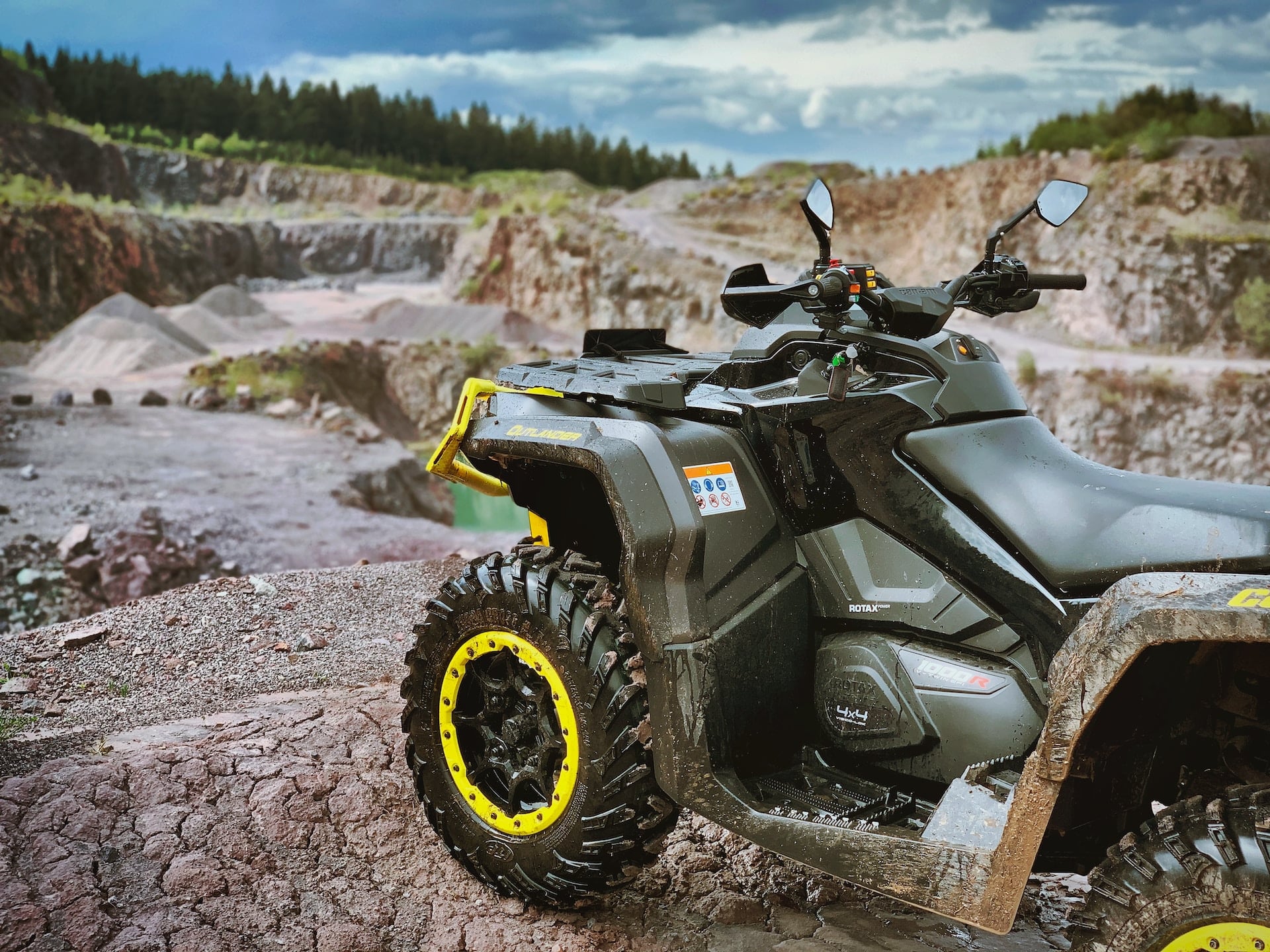Riding off-highway vehicles like quads, dirt bikes, and other all-terrain vehicles (ATVs) can be a great way to spend the summer. However, as we head towards ATV season, now is an ideal time to consider some of the risks associated with their use.
There is, unfortunately, a high rate of injury caused by ATV use, with numerous deaths in Alberta every year. This article considers some of the statistics relating to ATV injuries and ways that we can reduce the chance of falling victim, along with some things to consider if you have been involved in an accident.
ATV injuries are unfortunately very common and deaths happen every year
The Injury Prevention Centre at the University of Alberta keeps useful statistics relating to off-highway vehicle injuries. Unfortunately, riding such vehicles can be a particularly dangerous activity, with an average of 15 people succumbing to an ATV-related death in Alberta each year between 2002 and 2019.
Of these ATV deaths, more than half happened when the ATV rolled over. Head injuries were the leading cause of death. Alcohol is often also a factor, with more than half of the deceased drivers that were tested producing a positive result.
In addition, a huge number of people are injured due to ATVs every year. The Injury Prevention Centre reports an average of about 580 hospital admissions and over 4,800 emergency department visits each year.
Helmet use is very important in reducing the risk of injury and death
According to the Injury Prevention Centre, the person was not wearing a helmet in more than half of the ATV-related deaths where data was available.
In Alberta, helmets must be worn by anyone driving, operating, riding in or on, or being towed by, an off-highway vehicle on public land unless a particular exemption applies. The helmet needs to be CSA-compliant, and there is a fine for failing to wear a helmet.
There are a range of other legal requirements that apply to off-highway vehicle use in Alberta
The Alberta Government has issued a summary of some rules that apply to off-highway vehicle use.
Importantly, off-highway vehicles like ATVs can only be operated in specific areas. They cannot be operated on highways or roads (except for four-wheeled ATVs on three-digit-numbered highways during daylight hours in the course of farming operations or an emergency), unless there is a municipal bylaw that allows this. ATVs are normally not permitted in provincial parks but can generally be used on vacant public land for recreational use.
An impaired driver cannot operate off-highway vehicles. When using on public land, the off-highway vehicle must be registered and insured and equipped with a licence plate and lights. When it is possible to drive an ATV on a public road, the driver needs to have a driver’s licence and comply with the road rules.
Personal injury claims for ATV accidents
As we mentioned, ATV accidents are common and serious injuries may result, including traumatic brain injuries, broken bones and spinal cord injuries. Different types of accidents are possible and may lead to personal injury claims, including where:
- a negligent ATV driver collides with someone else or causes an injury to a passenger; or
- somebody else’s negligence results in injury to an ATV user, for example, when an object has been placed where it should not be located.
The injured person may have a claim for compensation if they can show that the defendant was negligent. This requires establishing that the defendant owed them a duty of care, breached the standard of care expected of a reasonable person, and that the defendant’s breach caused the injury.
Suppose someone else is legally responsible for the injury. In that case, the plaintiff may be entitled to compensation for things including medical costs for future care, lost wages and earning capacity and pain and suffering.
A personal injury claim could potentially be brought against the owner of a borrowed ATV
A recent Ontario Superior Court of Justice decision demonstrates that it may be possible to bring a personal injury claim against the owner of an ATV that lent it to the victim.
In Desrochers v McGinnis, a woman tragically sustained a severe brain injury in an ATV mishap. She was driving an ATV owned by her boyfriend’s father and was injured after it left the road at a curve. The accident occurred after she and her boyfriend took the ATV to retrieve a truck – he drove the truck back to his parent’s property while she drove the ATV.
The plaintiff argued that the boyfriend and his parents were responsible because they knew she was inexperienced and that letting her drive the ATV alone was unsafe.
The plaintiff’s boyfriend was liable for her injuries
The Court stated:
“The owner of an ATV or a person who can control access to it owes a duty of care to a person, like [the plaintiff], who they know has had little or no experience or instruction in operating one. It is a powerful machine which can result in serious injuries to a driver or passenger, whether child or adult, if it is not operated properly.”
The Court decided that while the boyfriend and his parents owed her a duty of care, only the boyfriend breached the standard of care in the circumstances and was liable for negligently causing her injuries. It found that he gave her no warning or directions about negotiating sharp turns on an ATV.
Contact the Personal Injury Lawyers at Cuming & Gillespie LLP for Advice on ATV and Recreational Accidents
If you have been injured due to the use of an ATV or other off-highway vehicle, the personal injury lawyers at Cuming & Gillespie LLP in Calgary may be able to help you. Our award-winning firm understands the importance of compensation in recovering from an injury and takes the time to get to know your individual circumstances. Please phone us at 403-571-0555 or contact us online to schedule a free consultation.

